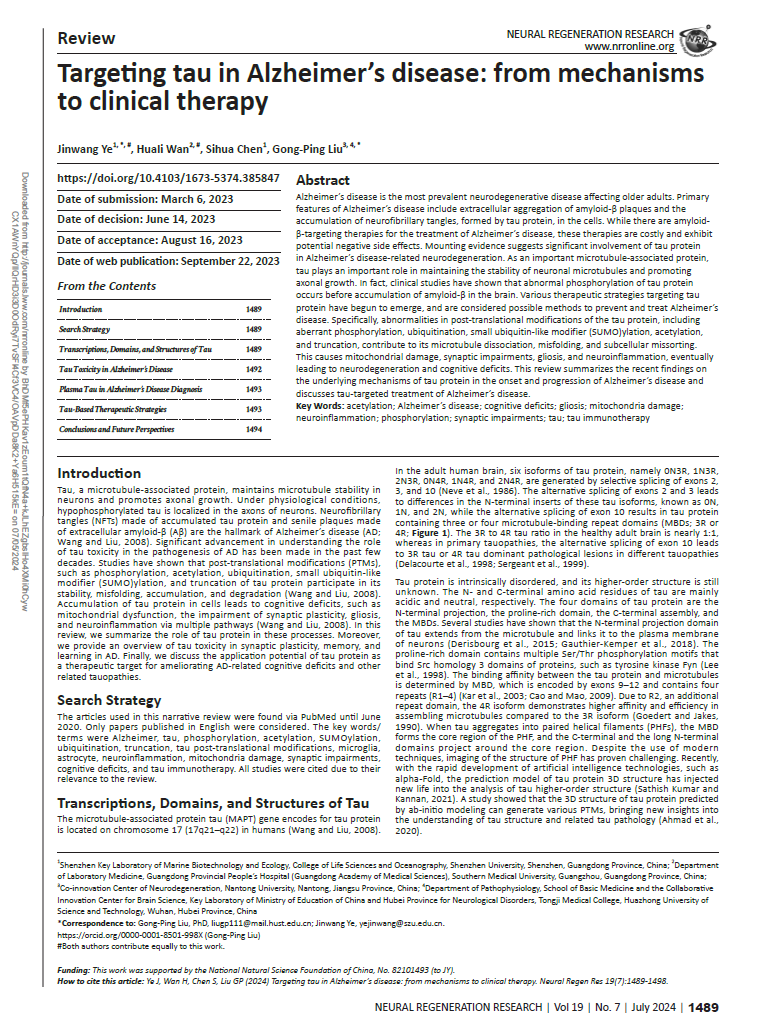Targeting tau in Alzheimer's disease: from mechanisms to clinical therapy
July 2024
Abstract
Alzheimer's disease is the most prevalent neurodegenerative disease affecting older adults. Primary features of Alzheimer's disease include extracellular aggregation of amyloid-β plaques and the accumulation of neurofibrillary tangles, formed by tau protein, in the cells. While there are amyloid-β-targeting therapies for the treatment of Alzheimer's disease, these therapies are costly and exhibit potential negative side effects. Mounting evidence suggests significant involvement of tau protein in Alzheimer's disease-related neurodegeneration. As an important microtubule-associated protein, tau plays an important role in maintaining the stability of neuronal microtubules and promoting axonal growth. In fact, clinical studies have shown that abnormal phosphorylation of tau protein occurs before accumulation of amyloid-β in the brain. Various therapeutic strategies targeting tau protein have begun to emerge, and are considered possible methods to prevent and treat Alzheimer's disease. Specifically, abnormalities in post-translational modifications of the tau protein, including aberrant phosphorylation, ubiquitination, small ubiquitin-like modifier (SUMO)ylation, acetylation, and truncation, contribute to its microtubule dissociation, misfolding, and subcellular missorting. This causes mitochondrial damage, synaptic impairments, gliosis, and neuroinflammation, eventually leading to neurodegeneration and cognitive deficits. This review summarizes the recent findings on the underlying mechanisms of tau protein in the onset and progression of Alzheimer's disease and discusses tau-targeted treatment of Alzheimer's disease.

